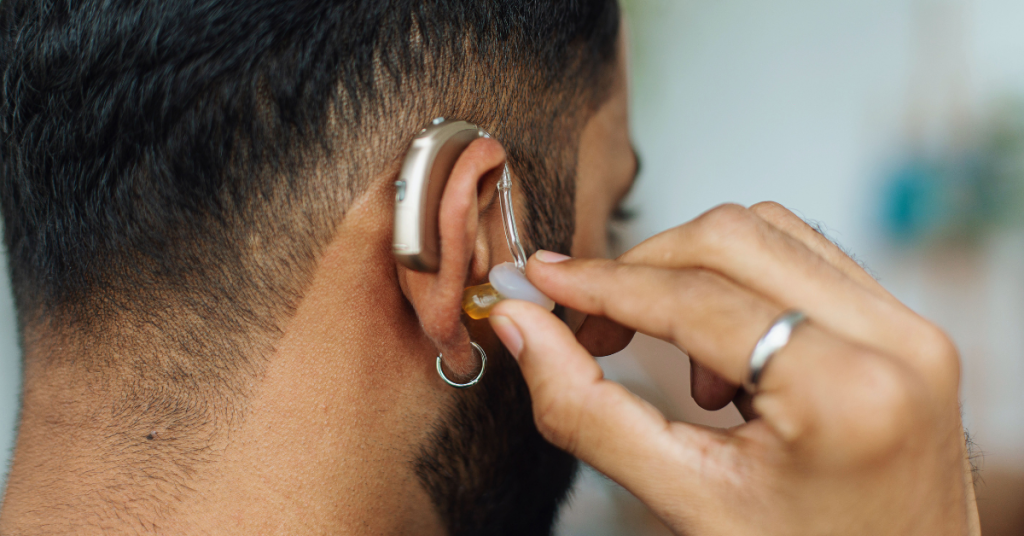
Hearing aids, the pioneers of auditory enhancement, open a world of possibilities for individuals facing hearing challenges. In this comprehensive guide, we’ll explore the myriad uses and inner workings of hearing aids. Additionally, we’ll delve into a crucial aspect—pricing—ensuring readers are equipped with valuable information for informed decisions about these transformative devices.
In the symphony of life, sound is a conduit to connection, communication, and the vibrant tapestry of our surroundings. Yet, for those navigating the challenges of hearing impairment, this symphony can become muted, leading to a profound impact on daily life. Enter hearing aids, the innovative instruments that serve as catalysts in restoring the richness of auditory experiences.
This comprehensive guide endeavors to unlock the world of hearing aids, how hearing aids actually work,hearing aids common features & benefits, and also hearing aids price. SO let’s dive into it.
How Hearing Aids Work: A Deep Dive into Auditory Enhancement Technology
Hearing aids are sophisticated devices designed to address hearing loss and improve the overall auditory experience for individuals. The intricate workings of these devices involve several key components and advanced technologies. Let’s explore the fundamental steps that contribute to the functionality of hearing aids.
1. Microphones: Capturing Sound Waves
At the core of every hearing aid is a microphone. These microphones are strategically placed to capture surrounding sounds. The captured acoustic signals are then converted into electrical signals by the microphone, marking the first step in the journey toward enhanced hearing.
2. Amplifiers: Enhancing Sound Signals
Once the microphone converts sound waves into electrical signals, these signals pass through an amplifier. Amplifiers play a critical role in increasing the strength of these electrical signals. This amplification process is essential for making sounds audible to individuals with varying degrees of hearing loss.
3. Signal Processing: Fine-Tuning for Optimal Clarity
The amplified electrical signals undergo sophisticated signal processing. This stage involves the use of advanced algorithms to analyze and fine-tune the signals. Signal processing helps to enhance specific frequencies, reduce background noise, and tailor the auditory experience to the unique needs of the wearer.
4. Receivers (Speakers): Transmitting Enhanced Signals
The processed signals are then transmitted to the receivers or speakers of the hearing aid. These components convert the electrical signals back into sound waves. The amplified and processed sounds are then delivered directly into the ear canal, allowing the wearer to perceive a clearer and more refined version of the original sounds.
5. Batteries and Power Source: Sustaining Continuous Operation
Hearing aids are powered by batteries, which provide the necessary energy to drive the entire process. The choice of batteries can vary, with some hearing aids using disposable batteries, while others incorporate rechargeable batteries. The power source is crucial for ensuring continuous and reliable operation of the hearing aid.
6. Volume Control: Customizing Sound Levels
Most hearing aids come equipped with volume control features, allowing wearers to adjust the loudness of the amplified sounds according to their comfort and preferences. This customization ensures that the hearing aid caters to the individual needs and specific hearing abilities of the user.
7. Feedback Suppression: Minimizing Whistling or Feedback Noise
To prevent whistling or feedback noises, especially when the hearing aid is placed close to the microphone, feedback suppression technology is employed. This feature continuously monitors the sound output and adjusts settings to minimize or eliminate unwanted noises, contributing to a more comfortable listening experience.
8. Directional Microphones: Focusing on Targeted Sounds
Directional microphones are designed to amplify sounds from specific directions while reducing sounds coming from other directions. This feature enhances the wearer’s ability to focus on conversations or important sounds in front of them, particularly useful in noisy environments.
9. Automatic Programs: Adapting to Different Environments
Many modern hearing aids come equipped with automatic programs that can adapt to various listening environments. These programs use sensors and algorithms to detect changes in the surroundings and adjust settings accordingly. For example, the hearing aid may switch to a noise reduction mode in a crowded environment and revert to a normal mode in quieter settings.
10. Bluetooth Connectivity: Seamless Integration with Devices
Advanced hearing aids often feature Bluetooth technology, allowing for seamless connectivity to smartphones, tablets, and other compatible devices. This integration enables wearers to stream phone calls, music, and other audio directly to their hearing aids, enhancing the overall listening experience.
Common Features in Hearing Aids: Enhancing Auditory Experiences
Hearing aids have evolved into sophisticated devices equipped with a myriad of features designed to address various aspects of hearing loss and improve overall auditory experiences. Whether you’re considering purchasing a hearing aid or exploring the capabilities of your current device, understanding these common features is essential. Let’s explore the key functionalities that contribute to the effectiveness of modern hearing aids.
1. Volume Control: Tailoring Sound to Individual Preferences
One of the most fundamental features of hearing aids is volume control. This function allows users to adjust the loudness of the amplified sounds according to their individual preferences and comfort levels. Whether in a quiet conversation or a bustling environment, the ability to fine-tune the volume ensures a personalized auditory experience.
2. Noise Reduction: Filtering Out Unwanted Background Noise
Navigating noisy environments can be challenging for individuals with hearing loss. Noise reduction technology in hearing aids helps filter out unwanted background noise, allowing wearers to focus on the sounds they want to hear. This feature enhances speech clarity and promotes a more comfortable listening experience in various settings.
3. Telecoil (T-Coil): Facilitating Phone Communication
Telecoils, or T-coils, are small coils of wire within hearing aids that enable wearers to connect directly to compatible telephones and hearing loop systems. This feature improves the clarity of phone conversations by reducing interference from surrounding environmental sounds. It’s particularly beneficial in public spaces equipped with loop systems, such as theaters and auditoriums.
4. Directional Microphones: Focusing on Targeted Sounds
Directional microphones are designed to pick up sounds from specific directions while reducing sounds coming from other directions. This feature enhances the ability to focus on conversations or important sounds in front of the wearer, providing improved clarity in situations where background noise is present.
5. Bluetooth Connectivity: Seamlessly Integrating with Devices
Modern hearing aids often come equipped with Bluetooth technology, allowing for wireless connectivity to smartphones, tablets, and other compatible devices. This feature enables wearers to stream phone calls, music, and other audio directly to their hearing aids, providing a seamless and convenient listening experience.
Benefits of Using Hearing Aids
Hearing aids bridge communication gaps, impacting personal and professional relationships. Understand how the benefits contribute to the overall value proposition, helping justify the pricing of these transformative devices.
Enhanced Quality of Life
Beyond improved hearing, explore how enhanced quality of life influences the perceived value of hearing aids, contributing to a more holistic understanding of the investment.
Prevention of Social Isolation
Addressing social isolation has immeasurable value. Explore how hearing aids contribute to increased social engagement and consider the associated pricing as an investment in mental and emotional well-being.
Increased Safety and Awareness
The safety benefits of hearing aids are invaluable. Delve into how these devices contribute to situational awareness, and assess whether the pricing aligns with the added layer of security they provide.
Hearing Aids Price Section
Understanding the pricing of hearing aids is vital for making an informed decision. Prices can vary significantly based on factors such as brand reputation, technological features, and design. Entry-level hearing aids may start at around $500 per ear, while more advanced models with cutting-edge features can range from $1,000 to $6,000 per ear. It’s important to strike a balance between your budget and the features that best suit your needs. Some health insurance plans may cover part of the cost, and financing options are often available. Consider the long-term benefits of improved hearing and the impact on your overall quality of life when evaluating the value of different price points. You can buy hearing aids from your nearest hearing care and speech therapy center, or you can buy them from any trusted online shop.
Verdict
Comprehending the uses, workings, and pricing of hearing aids empowers individuals to make informed decisions about these transformative devices. While pricing is a crucial consideration, it’s essential to view hearing aids as an investment in an enriched quality of life. Striking a balance between features, budget, and long-term benefits ensures that you not only hear better but also make a wise and fulfilling investment in your auditory well-being. Embrace the possibilities that hearing aids offer, and embark on a journey to rediscover the beauty of sound with confidence.



Recent Comments